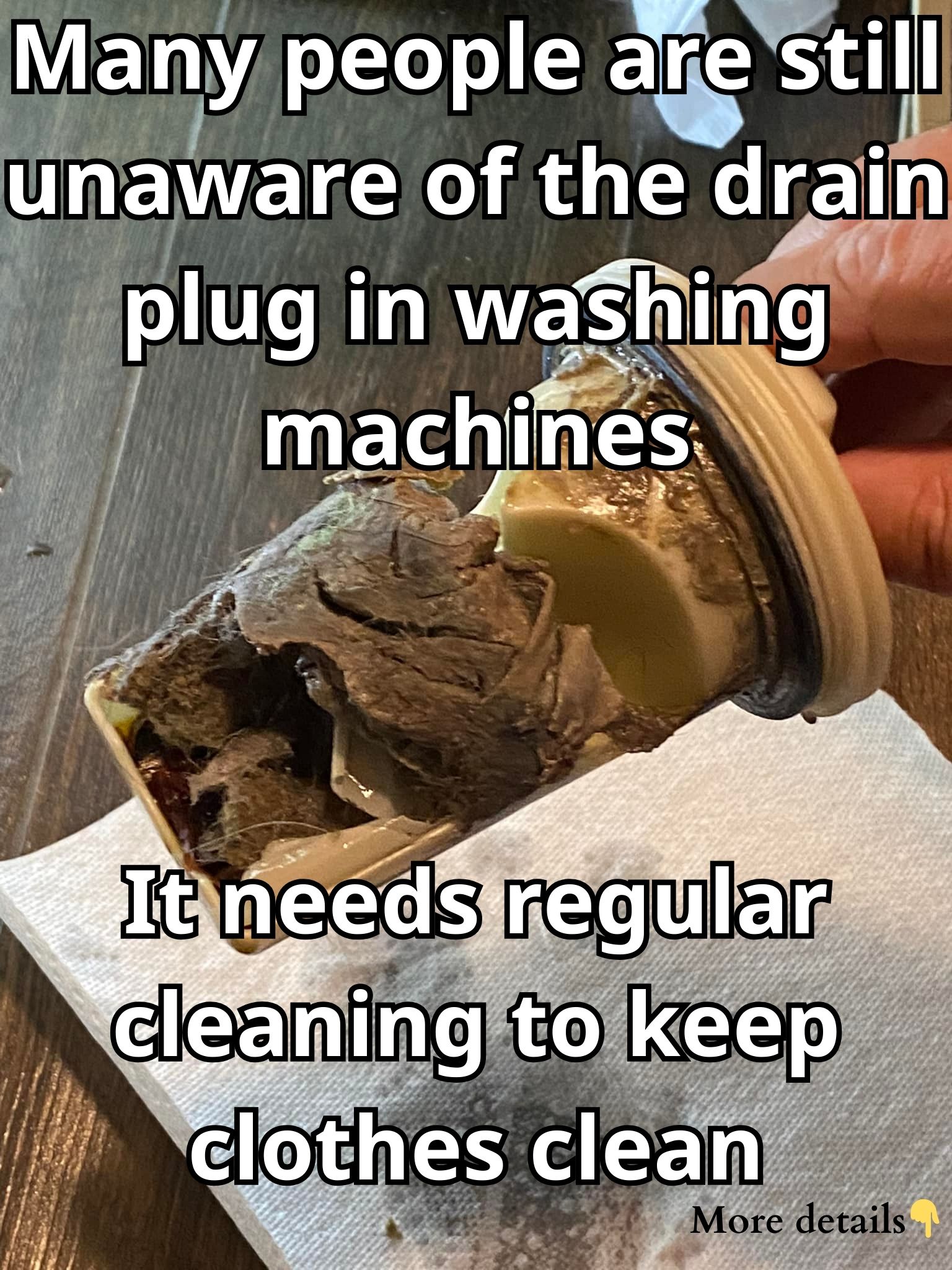Let’s face it—there’s nothing more frustrating than pulling a load of freshly washed laundry out of the washing machine only to realize that it doesn’t smell as clean or fresh as it should. You’ve used detergent, maybe even fabric softener, and yet something’s just not right. Believe it or not, the problem may not lie with the products you’re using or even the way you’re washing your clothes.

Instead, the issue could be hiding in a small, often overlooked part of your washing machine: the drain plug and its built-in filter. Like many people, you probably know how to operate your washing machine and dryer without any trouble, but you might not be familiar with the internal components or basic maintenance these appliances require. Most of us don’t think about what happens inside the machine after the cycle ends or where all the dirt and debris go. That’s why a helpful tip shared by a Facebook user named Pj Carmack is gaining attention—because it points out a small but essential detail that could make a big difference in your laundry results. According to Pj, every washing machine has a drain plug that contains a filter, and this filter needs to be cleaned regularly.
While it may not be something your appliance shouts about, a clogged drain plug filter can significantly affect how well your machine cleans your clothes. Over time, lint, hair, dirt, fabric fibers, detergent residue, and other debris build up in this filter, restricting proper drainage and reducing the machine’s ability to rinse effectively. As a result, even though your clothes are technically “clean,” they may come out smelling less than fresh. The best way to handle this issue is to consult your washing machine’s owner’s manual. This will tell you exactly where the drain plug is located—usually near the bottom front of the machine, behind a small panel—and how to safely remove and clean the filter. If you’ve never done this before, be prepared for what you might find.
In the photo Pj shared, their machine’s drain plug was visibly dirty, clogged with dark, gunky residue that had clearly been sitting there for quite some time. And while it may look gross, the good news is that cleaning it is relatively easy. You’ll typically just need a towel, a shallow pan to catch any water that leaks out, and maybe an old toothbrush or cloth to scrub the filter clean. Once cleaned and reinstalled, your washer should be able to drain properly again, and you’ll likely notice an improvement in how your laundry smells.
@zapatas_cleaningservices Here are two reasons why your freshly washed clothes smell bad. #1– your washer is dirty. Lack of regular cleaning will lead to build-up and smells. Ideally, you should use a washing machine cleaner once a month. #2– you’re overloading your washer. When clothes are tightly packed, water can’t reach all surfaces properly, resulting in dirty clothes.#laundrytipsandtricks #speedqueenlaundry #speedqueen #laundryday #toploader #frontloader ♬ original sound – Kellsie Cleaning Tutorials🧽🧼
This little-known maintenance task might seem minor, but it can make a major difference in your overall laundry experience. Many people assume that if their washing machine runs and their clothes come out looking clean, there’s no problem. But cleanliness isn’t just about appearance—it’s also about how your clothes smell and feel. If you’ve been experiencing persistent musty odors even after washing, this filter is a great place to start troubleshooting. Just like any household appliance, your washing machine performs best when it’s maintained regularly. Cleaning the drum, running occasional cleaning cycles with vinegar or machine cleaner, and wiping down seals and door gaskets are all important tasks—but the drain plug filter is a step that’s often forgotten and not mentioned nearly enough. So next time you notice your laundry lacking that fresh-from-the-dryer scent, don’t blame your detergent or start looking for new laundry products. Instead, check your washer’s drain plug filter. It takes just a few minutes to clean, doesn’t cost a thing, and could solve the problem you didn’t even realize was affecting your laundry. Thanks to Pj Carmack for sharing this incredibly helpful and often overlooked laundry tip—because sometimes the solution to a frustrating problem is hiding in plain sight.





